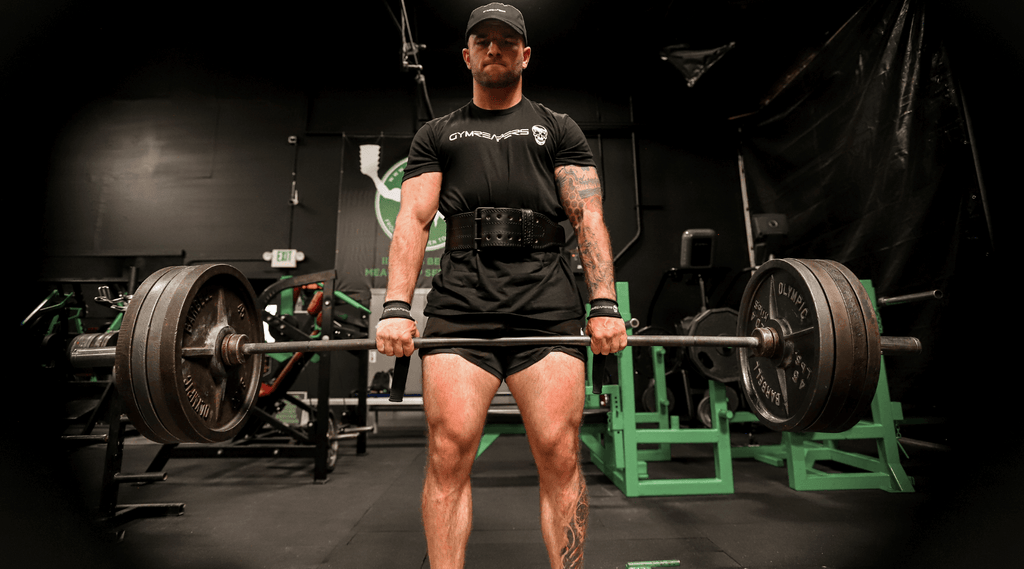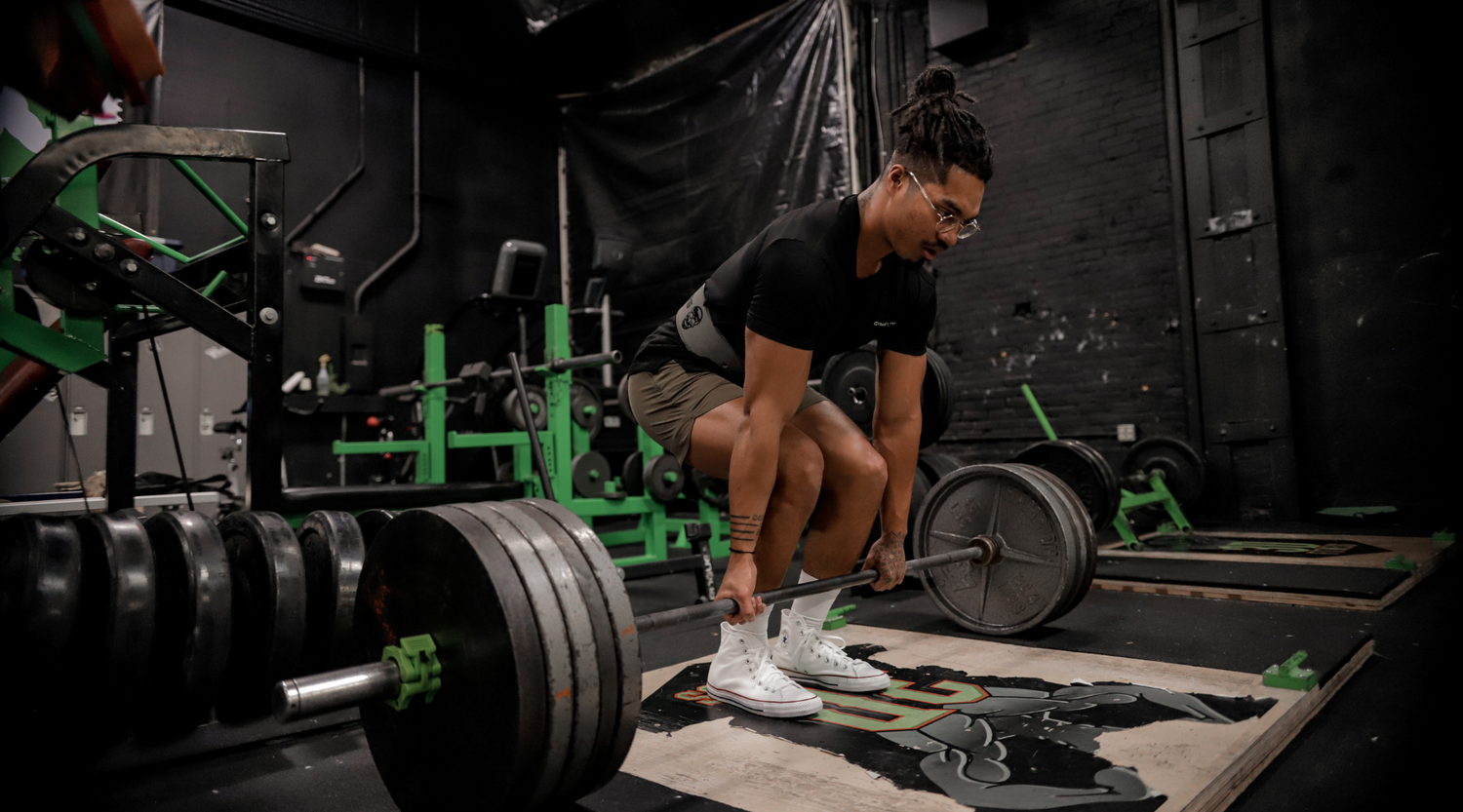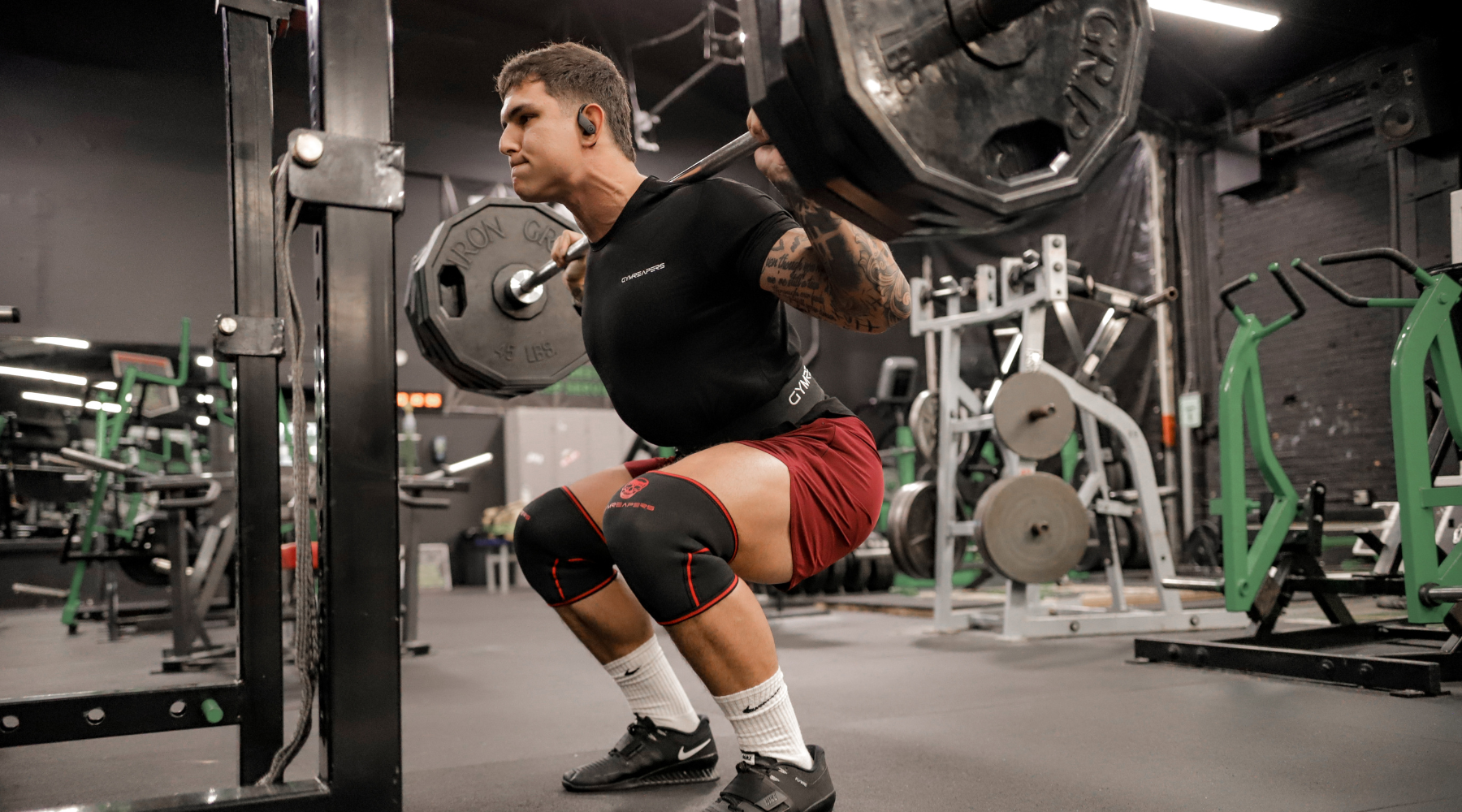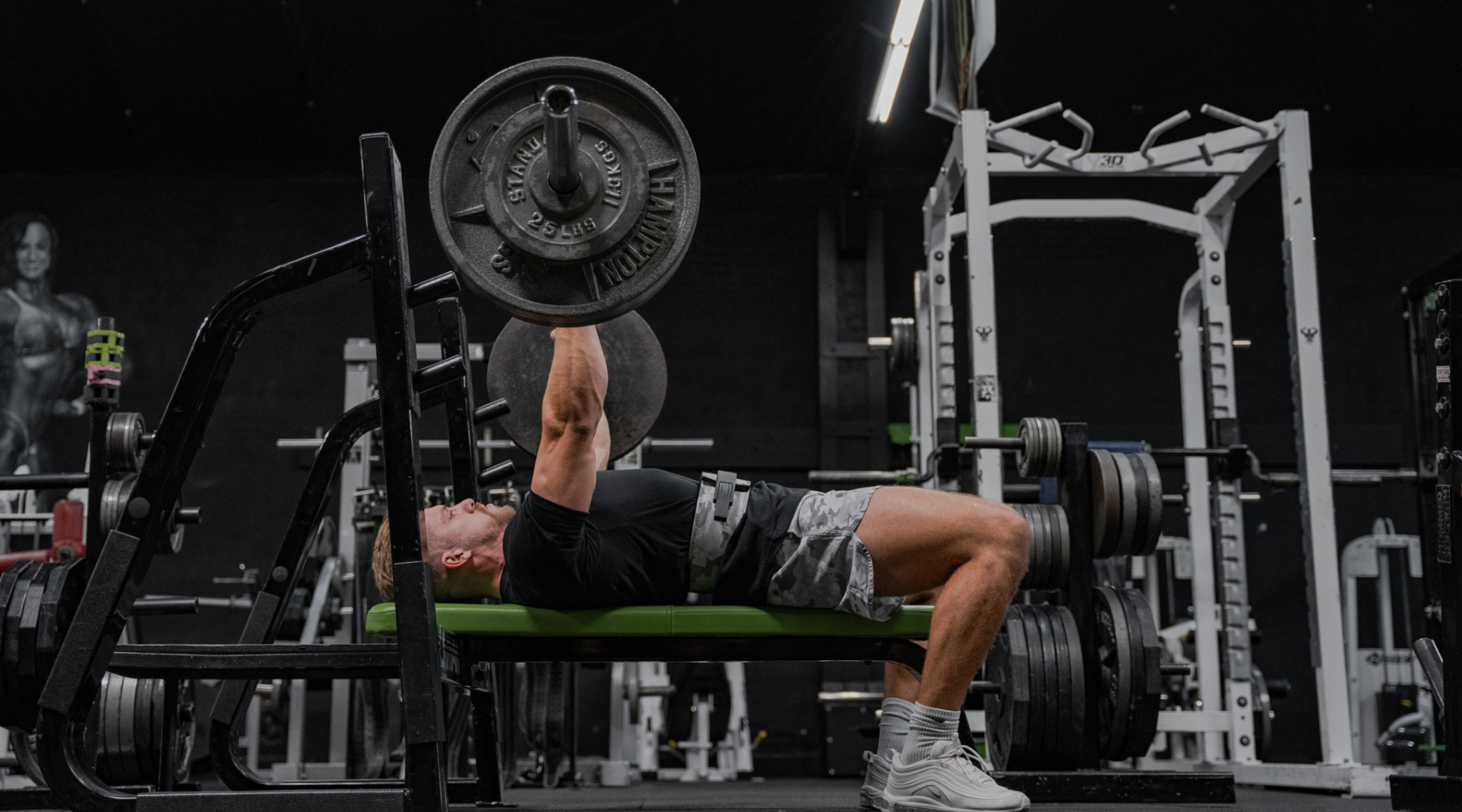If you’re wearing a belt for deadlifts, you should know that there are specific nuances related to your belt placement and level of tightness that will either positively or negatively impact your performance.
Wearing a weightlifting belt for deadlifts can help increase the amount of weight you can lift.
This is particularly important for those lifters who want to maximize their strength or compete in a sport like powerlifting. For deadlifts, wear the belt slightly looser compared to how you would wear it for exercises like squats.
Incorrect use of your belt for deadlifts can lead to higher risk of injury and an awkward start position. I’ll explain more about why that’s the case below, plus other techniques on how to use a lifting belt properly for deadlifts.
Recommended Weightlifting Belts for Deadlifts
Key Takeaways
- Beginners do not need to wear a belt for deadlifts but as you advance in training, wearing a belt will help increase performance, especially if you want to lift as much weight as possible.
- Lifters that deadlift in the sumo stance may want a lower belt position compared to lifters that deadlift in the conventional stance.
- To get the most out of your belt for deadlifts, brace your core, then breath into your stomach.
The Science Behind Wearing A Belt For Deadlifts

1. Decreased Spinal Loading
The main benefit of wearing a lifting belt is decreased spinal loading.
The belt takes stress away from the core and lower back. This allows for more stress on the hamstrings, and glutes by not being limited by your core.
While the spine is not a delicate structure and can handle stress, decreasing the overall loading will mean reduced injury risk when handling heavier weights.
2. Decreased Perceived Effort
Using a belt will decrease your Rate of Perceived Exertion (RPE) while doing deadlifts.
RPE is a measure of how hard you believe to be working. Therefore, a belt can make it feel like the weight you’re lifting is lighter than it actually is.
This was shown in the following study:
“Weightlifting belts…have positive effects on the kinematics of deadlift, time to complete a deadlift and RPE in male recreational weightlifters.”
They found that weightlifting belts alone had positive effects on lifters' speed and rate of perceived exertion while deadlifting.
3. Increased Intra abdominal pressure
When looking at studies of intra-abdominal pressure with a belt vs without it, intra abdominal pressure is significantly higher while wearing a belt.
Intra-abdominal pressure is the amount of pressure built up within your abdominal cavity or how strong you are able to brace your core.
Intra-abdominal pressure being increased while wearing a belt will increase the amount of weight you can lift and decrease spinal loading.
Ed Coan, Hall of Fame Powerlifter, said:
“Missed lifts happen more often from loss of form than they do from lack of strength.”
In the deadlift losing your intra-abdominal pressure mid-lift will almost always result in a lack of form, and therefore, a missed lift.
Who Should Wear A Belt For Deadlifts

1. You are a Powerlifter
High-level powerlifters all wear belts to help increase their deadlift, which is one of the three main movements (squat and bench press being the other two).
Any powerlifter who has the goal of having the best deadlift possible should wear a belt.
Note: If you are competing in powerlifting make sure your belt is approved in your federation. A 4 inch wide and up to a 13mm thick belt is permitted in the sport of powerlifting.
2. You are an Olympic Lifter
Deadlifts are rarely used for Olympic lifters in training as they spend more time practicing cleans and snatches.
However, there are many accessory movements similar to a deadlift that Olympic weightlifters perform, such as a “clean deadlift” and “snatch deadlift”.
These movements help weightlifters either by practicing the first half of their movement or developing strength off the floor by using heavier loads than they normally would. For these movements, Olympic lifters will wear their belt the same as they would for their main movements.
3. You are a Strongman Athlete
Strongman is the sport of lifting, carrying, and throwing heavy objects of various shapes and sizes. Deadlifts, car deadlifts, or deadlift medleys tend to be a highlight of any strongman event.
When it comes to maximal performance, especially the deadlift, you will see competitors wearing belts to perform their best in strongman events.
Sometimes strongman competitors wear a soft belt (nylon), or sometimes a soft belt and a hard belt (leather) depending on the event.
When it comes to deadlift, you will almost always see them wear both in order to perform their best.
4. You are a CrossFitter
Much like Strongman, CrossFit events will have deadlift medleys or deadlift rep for challenges, and occasionally one rep max deadlifts.
Depending on the event, cross-fitters may also wear a soft or hard belt for their deadlifts, and rather than it helps with their maximal strength (1 rep max), it helps them achieve strength endurance, i.e. more reps than they would otherwise be able to do without a belt.
Providing back support for deadlifts is particularly important for Crossfitters who have to compete in multiple events back-to-back so that they’re not accumulating fatigue throughout training or competition.
5. You are looking to increase how much weight you can lift in the gym
Maybe you aren’t a competitive lifter of any kind. You are just someone that likes going to the gym and doing deadlifts.
You may not need a belt for competitive reasons however wearing a belt will still increase your deadlift.
Whether your goal with deadlifts is building muscle, building strength for daily life, bone density, or just simply because you think having a big deadlift is cool, wearing a belt will help.
When Should You Start Using A Belt For Deadlifts

Recommended Weightlifting Belts for Deadlifts
As a beginner you will likely not need to wear a belt for deadlifts. When you are new to the movement and learning, your core will not be a limiting factor as much as your inefficacy with technique.
Adding a belt may confuse you as it's just one more variable to learn. You should avoid using a belt for your first 1-3 months of learning how to deadlift.
After 3 months of learning to deadlift (and working on your technique,) you will be proficient enough that your core can become a limiting factor in increasing your deadlift.
At this time you should start wearing your belt if increasing your deadlift is a primary goal of yours.
How to Wear Your Belt For Deadlifts
Weightlifting Belt Placement
Placement is very important when it comes to wearing a belt for deadlifts. Some lifters prefer to wear their belt in a higher position and some prefer a lower position. Neither is right or wrong, it just depends on the lifter.
With that said, lifters that deadlift sumo stance may prefer a lower position as they can sit their hips lower and get their torso more upright. The lower position will allow for more core bracing into the belt more like a squat.
Lifters that use the conventional stance may prefer a higher belt position as with a more bent over torso position more load is placed on the mid part of the back.
Ultimately you want to place your belt in the part of your back that is the weakest (most prone to bending or rounding on heavy lifts without a belt) without causing you discomfort.
If your belt placement is causing you discomfort try moving your belt up or down slightly in position to see if there are any changes.
It is possible your belt placement will change over time, as you increase or decrease your bodyweight, however you will tend to find your “sweet spot” with enough practice.

Weightlifting Belt Tightness
When it comes to belt tightness many lifters choose to wear their belt looser than they would for squats or other lifts.
When you are squatting you are not able to take in as much air because you are bracing with the bar on your back and it is pushing air out of your stomach.
In deadlifts, you do not have that issue because you are able to brace first then hinge forward and set up for your deadlift.
The tightness of your belt will still be very individual from lifter to lifter and some will prefer looser and tighter positions. Experiment with what tightness you feel strongest wearing your belt for deadlifts.
Due to different positions and tightness for deadlifts compared to squats, lifters may find they need to adjust tightness from lift to lift or even have a completely different belt for the lifts due to this change in position and tightness.
When to put on your belt in a workout
In a given workout you probably don’t need to wear your belt for all your warm-up sets.
A common guideline given is don’t put your belt on until you reach 80% of your working weight for the day. Others may say don’t put your belt on until you reach 80% of your one rep max deadlift.
A strategy that I like to implement with my lifters is to put on your belt starting with your second or third warm-up set.
This is a little earlier than others may suggest; however, there are a few reasons this can be effective:
- You get more practice using the belt (bracing into a belt is a skill to learn in and of itself)
- It allows you to adjust and find your sweet spot better for your working sets (great if you are a beginner and still haven’t figured out your optimal placement)
- You use less energy on your warmup sets due to less perceived effort (Lower RPE) when wearing a belt. This will lead to you feeling less worn out and more prepared when you get to you working sets.
How to brace and setup a belt properly for deadlifts

Bracing into a belt for deadlifts is a skill that takes practice.
1. Flex your abs
Before hinging down to the bar imagine getting punched in the gut. This is the feeling of contracting your abdominal muscles.
2. Breath into your stomach
The second step is really where the belt assists in creating a strong core brace for deadlifts.
Breathe air into your already braced stomach and think of expanding your core out into the belt in all directions.
Really make sure to get in as much air as possible. Because you are in an unloaded standing position, this should be more air than you would expect to get in other lifts that aren't deadlifts.
3. Hinge Forward To Grab The Bar While Keeping Your Core Tight
Maintain that strong core position with air in your stomach until you push your hips backward and bend over to grab the bar.
Are There Any Cons To Deadlifting With A Belt?

Pain & Discomfort For Short Torso Lifters
A potential downside of deadlifting with a belt is it may cause pain or discomfort.
This is particularly common in shorter lifters (shorter than 5 '4) as they tend to have less room between their bottom rib and the top of their hip bones.
This means there is not enough space to wear the belt without skin pinching, bruising, or the belt causing general discomfort when hinging for a deadlift.
A simple fix to this solution exists for these lifters. A less wide belt (3 inch) or a tapered 4 inch belt will likely cause significantly less or no discomfort.
Compensation For Improper Technique
Some lifters may over compensate for poor technique by wearing a belt.
For example a lifter that has a very rounded back during deadlifts and rather than learning proper technique tries just putting on a belt.
Wearing a belt is not a replacement for having good technique and will not provide as many benefits or prevent injury if you have poor technique.
Over reliance May Lead To Weakened Core Muscles
A belt provides support to your core to allow you to lift more weight due to the core not being a limiting factor. The downside of this is that your core muscles will not work as hard at the same loads. However this may be less of an issue at relatively loads.
For example lifting 225lbs with a belt may not work your core as much as 225 lbs without the belt but wearing the belt may allow you to lift 245 lbs and the core strengthening may be similar at max loads with and without the belt.
If core strength is something you are worried about, training for periods of time without the belt, using accessories that work your core more or say deadlifting once a week with the belt and once a week without the belt are useful strategies to work in deadlift specific core work.
Can Be A Distraction For New Lifters
Learning to use a belt can be a skill. As human beings we succeed much better the less we split our focus. If you are still mastering the basics of a deadlift using a belt can just be a distraction. You should spend at least three months learning proper deadlift technique before putting on a belt to assist.
What Makes For A Good Deadlifting Belt?
- Thickness: A 10mm thick belt is going to be ideal for most deadlifters. If you are an advanced-level powerlifter who has a larger torso, then perhaps consider wearing a 13mm belt. Learn more in our other article 10mm vs 13mm belt.
- Material: A nylon belt can be great for learning how to deadlift. However a nylon belt will lack the sturdiness of a leather belt needed to get performance benefits for deadlift. Learn more in our article Leather vs Nylon Lifting Belts.
-
Closure Mechanism: Most lifters will prefer a prong belt because it allows for the desired looser fit for deadlifts. Some lifters may like a tighter fitting belt on deadlifts and choose to go with a lever belt. Learn more in our article Lever vs Prong Lifting Belts.
Best Belts For Deadlifts
Best belt for new lifters: 10mm – Prong Belt
 The 10mm prong belt is great for lifters that want the ability to easily adjust the belt day to day and across different lifts.
The 10mm prong belt is great for lifters that want the ability to easily adjust the belt day to day and across different lifts.
Great for lifters that expect to wear a belt in different positions for different lifts or that may experience more daily water retention and loss in their torso and are looking for the ability to easily adjust size without tools.
Best belt for competitive powerlifters: 10mm – Lever Belt

The 10mm lever belt is great for anyone that wants to get their belt nice and tight for a strong brace. Great for powerlifting, IPF and USAPL approved. Great for newer lifters looking for their first belt purchase to help improve their deadlift.
Frequently Asked Questions
How Much Will A Belt Add To Your Deadlift?
A belt could add anywhere from 5-20% of your 1 rep max onto your deadlift depending on your experience leave and how well you use it. This means, based on your 1 rep max, you could see anywhere from 5lb to a 30lb+ increase depending on the belts use.
Will Wearing A Belt For Deadlift Stop My Back From Rounding?
No, a belt will not stop your back from rounding on deadlifts. Rounding in the upper back is normal on deadlifts and can not be prevented from wearing a belt; however a belt can limit and stop rounding in the lower back by increasing core tension and creating extra support for the area.
At What Weight Should You Wear a Belt for Deadlifts?
No standard weight exists that you should start wearing your belt for. It depends on preference and goals. Belts are generally recommended for top end work (near your max) but can be worn for any deadlift workloads to increase your strength.













Leave a comment
All comments are moderated before being published.
This site is protected by hCaptcha and the hCaptcha Privacy Policy and Terms of Service apply.